|
|
LRTC Emergency Response Team
RESOURCE GUIDE
Water Supply Unit
(Water Supply-1)
|
Please note: This unit has been RETIRED and this page is left for historical purposes.
Its replacement is Tactical Support-1
Updated April 1, 2020
Garage location: Stagecoach, NV
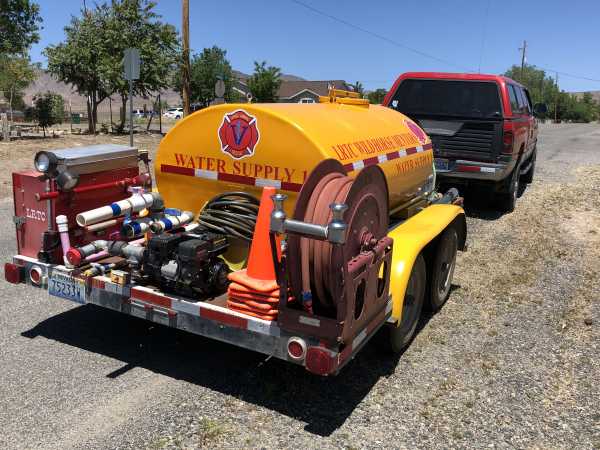
|
This information sheet is primarily intended for persons associated with or working with the LRTC Technical Large Animal Rescue Team, however the information may be useful to other groups or private individuals who may wish to similarly equip a support unit or who may need to utilize the resources available on LRTC's Water Supply-1.
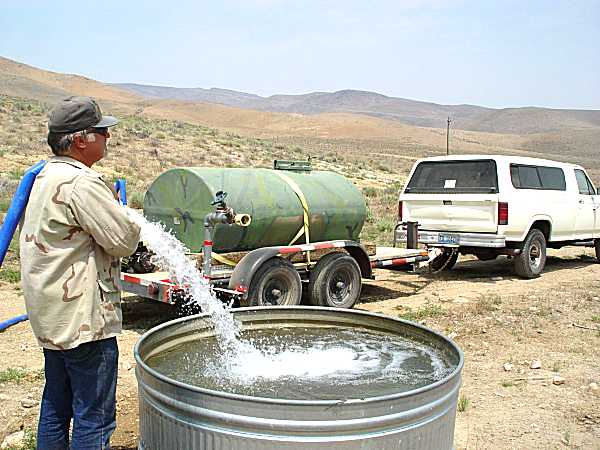 Water Supply-1 was originally built to provide emergency water to livestock and free-roaming horses on the range during droughts. At that time it was little more than a tank and pump mounted on a home built trailer with a length of hose for filling tanks.
Water Supply-1 was originally built to provide emergency water to livestock and free-roaming horses on the range during droughts. At that time it was little more than a tank and pump mounted on a home built trailer with a length of hose for filling tanks.
As the years progressed, and with assistance from allied agencies that had some surplus equipment, Water Supply-1 has evolved into a multi-purpose resource utilized for a combination of duties including providing range resources (water,) emergency stock water during emergencies, operating water powered rescue equipment, and providing defensive fire protection.
|
|
The following inventory is carried on Water Supply-1.
|
- 400 gallon tank
- 140 GPM gasoline powered pump
- 100 gallon portable stock tank
- 2-inch pressurized dump valve
- 2-inch preconnected discharge line with 1½ inch 65 GPM SS/fog nozzle
- Extension lengths for 2-inch discharge line
- 125-ft. 1 inch booster line with forestry nozzle on electric rewind reel
- 100-ft. 5/8 inch HD garden hose
- 4) 25-ft. lengths 5/8 inch garden hose
- 2) 10-ft. 2½-inch drafting hose with strainer
- 2½-inch double female adapter
- Hand operated dewatering pump
- Nikopolis needle
- 4) 5-foot jetting wands (AKA mud lances)
- 1 to 4 manifold for jetting wand hoses
- 80 CF SCUBA cylinder, regulator and hoses
- 60 ft. long 5-inch diameter air boom
- Round point shovel
- Polaski tool
- 6 volt flashlight
|
- Dry chemical fire extinguisher
- First aid kit
- Various size utility ropes
- Nylon webbing
- Hydrant spanner
- Pipe wrench
- Strap wrench
- NPSH to NST thread adapters
- Garden hose reducers and adapters
- Small diameter SS/fog nozzle
- Small diameter straight tip nozzle
- Hose clamp
- Bungee cords
- Spare spark plugs
- Spark plug wrench
- Starting fluid
- Shop rag
- Emergency roadside reflector stands
- Plastic tarp
- (6) 18-inch traffic cones
|
Rear Equipment layout (L to R):
Polaski tool, fire shovel, spray bar
25 ft. 2 inch protection line, fuel tank
100 ft. garden hose, recovery straps
(4) Jetting wands, 25 ft. 2 inch protection line with nozzle, (6) traffic cones
Electric rewind reel with 125 ft. booster hose
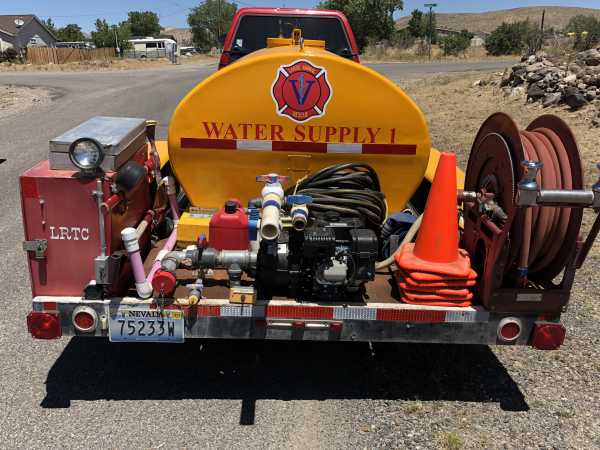
Plumbing layout:
Suction port marked in red. Discharge ports marked in blue.
Suction: 2½ inch National Hose.
Discharge: 2 inch dump, 2 inch preconnect, 1½ inch discharge, 1 inch booster, 3/4 inch discharge.
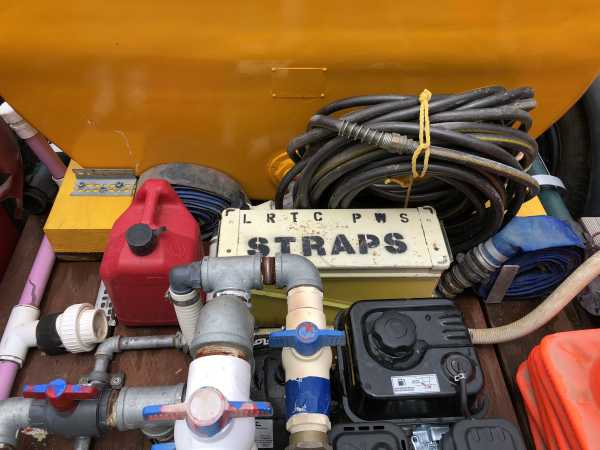
Jetting wands stored next to tank skid on RH rear.
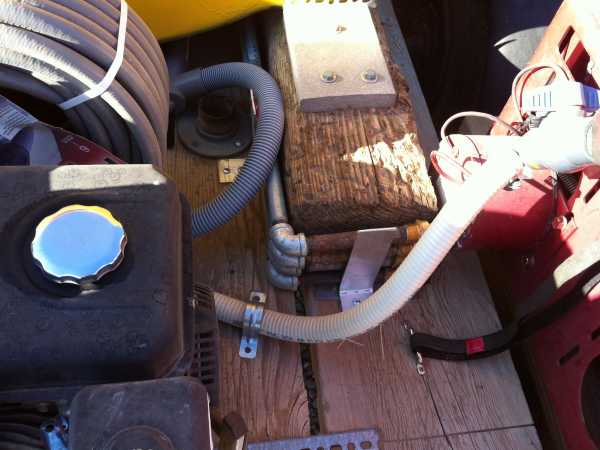
Left side inside fender.
Drafting hose, 50 foot 2-inch protection line.
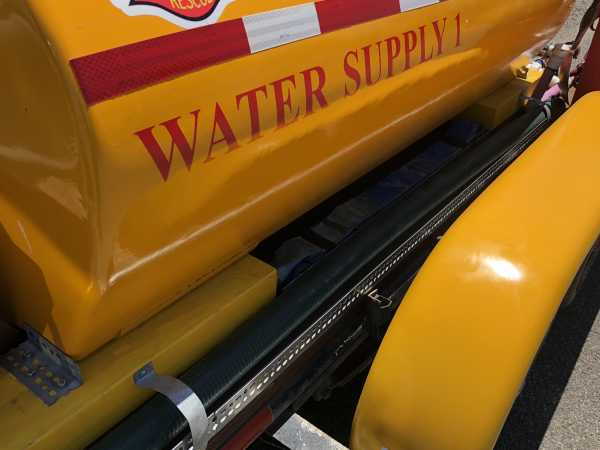
Right side inside fender.
Drafting hose with strainer, Long boat hook, manual dewatering pump..
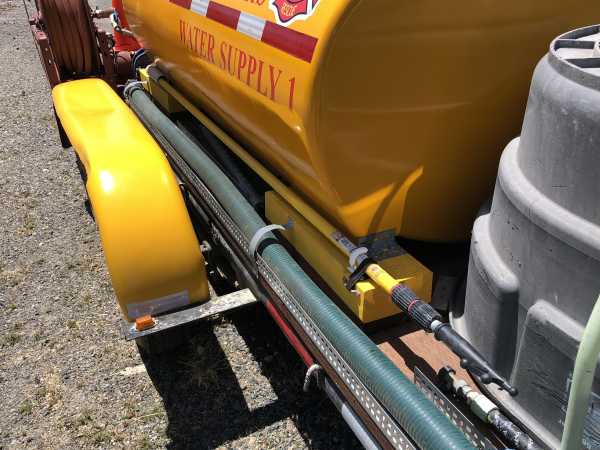
"Silver box."
Pipe wrench, hydrant spanner, hose clamp, small utility ropes, 1 to 4 manifold,
SS/fog nozzle, straight tip nozzle, thread adapters, shop towels, bungee cords, nylon webbing.
strap wrench, extra shutoff, spare spark plug, spark plug wrench, starting fluid
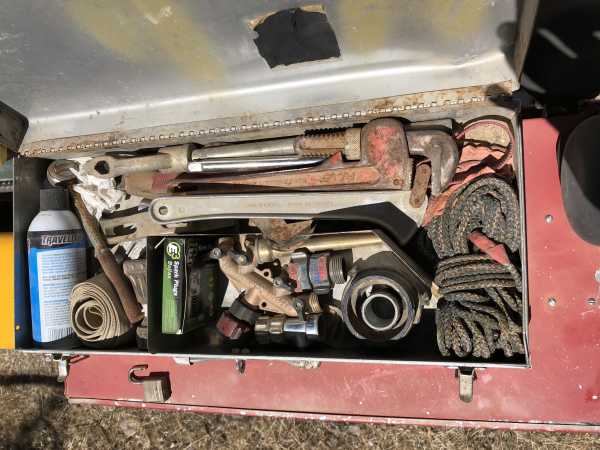
"Red box."
(4) 25-ft. jetting wand hoses, fire extinguisher, 2½-inch double female,
first aid kit, 6V lantern, roadside reflectors and large utility line.

Front of trailer. Stock tank, drafting hoses (one on each side of tank,)
Nicopolis needle arched over stock tank.
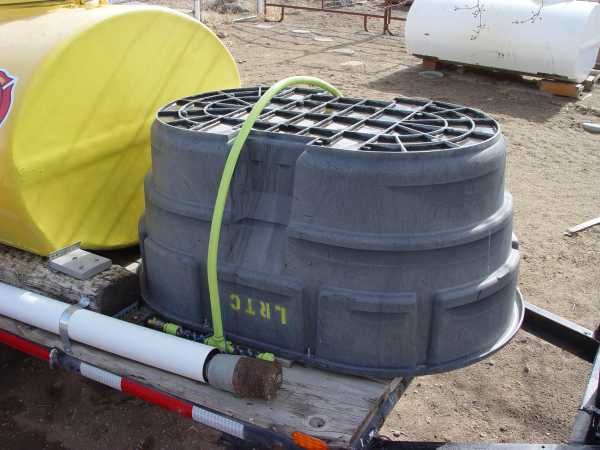
SCUBA cylinder, hose, air supply box and air boom hose.
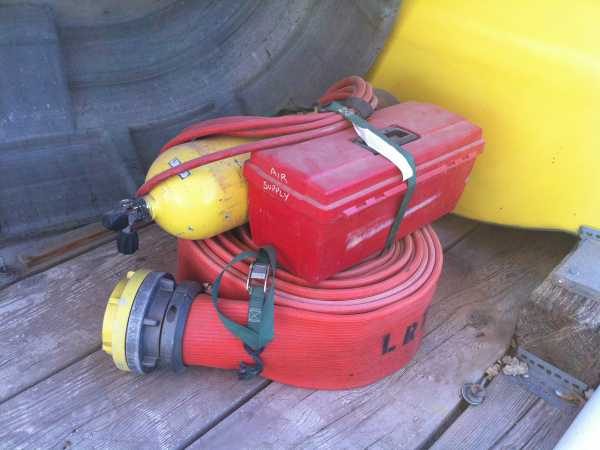
Regulator, adapters, manifold, tire filler, gauge, floating rope, webbing.
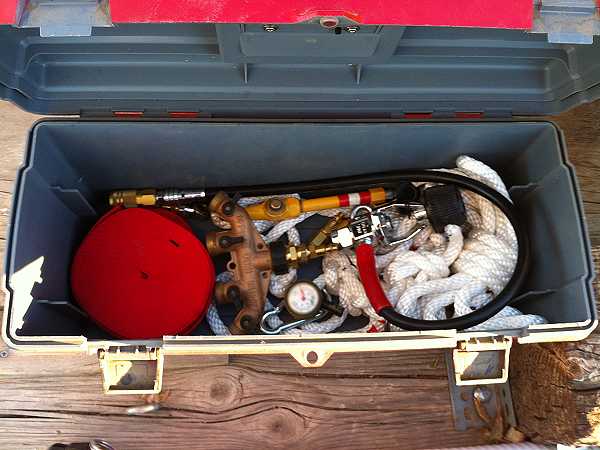
Example of using water powered rescue tools during training.
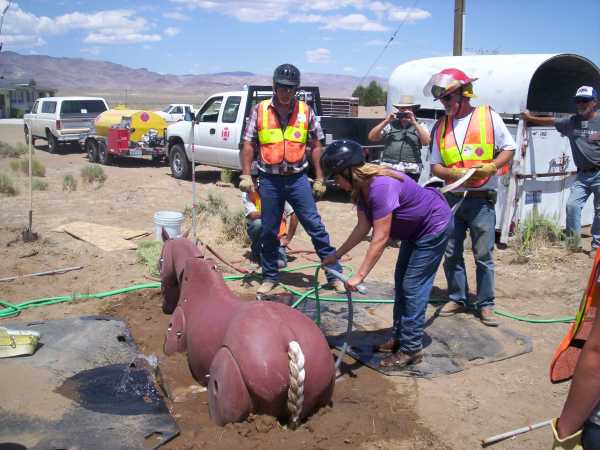
Example of drafting operation.
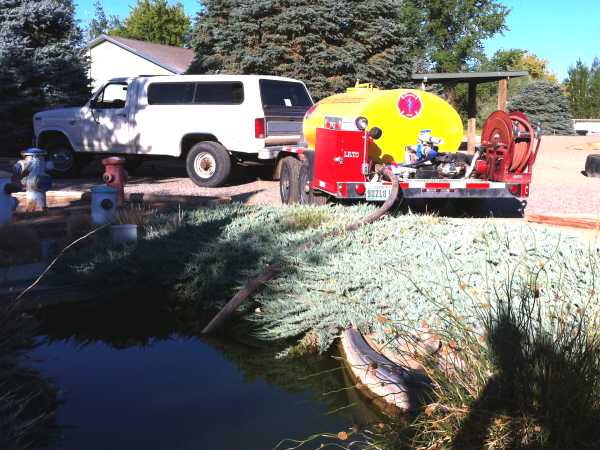
Reach of the 2-inch preconnected protection line with 65 GPM SS/fog nozzle.
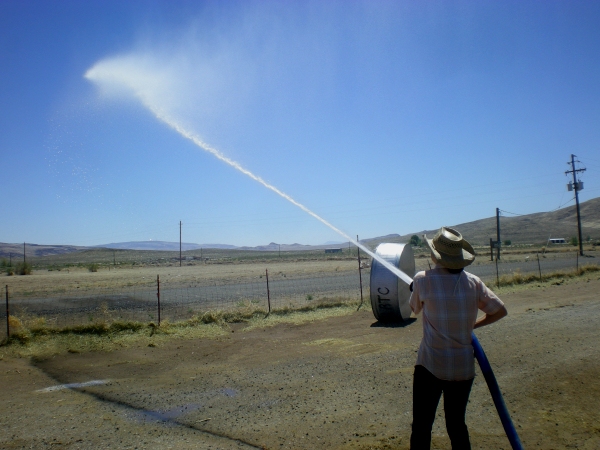
The training information presented in these information sheets and guides is offered for illustrative and volunteer refresher purposes only. It is not a substitute for actual hands-on training.
|
Press Back to return to the page which brought you here
Return to LRTC Wild Horse Mentors
Return to KBR Training Page
Go To  KBR Horse Net KBR Horse Net
|


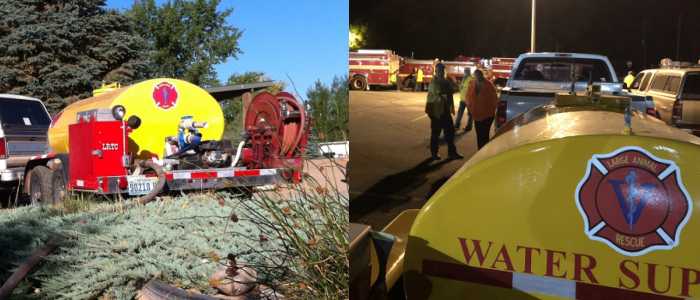

 Water Supply-1 was originally built to provide emergency water to livestock and free-roaming horses on the range during droughts. At that time it was little more than a tank and pump mounted on a home built trailer with a length of hose for filling tanks.
Water Supply-1 was originally built to provide emergency water to livestock and free-roaming horses on the range during droughts. At that time it was little more than a tank and pump mounted on a home built trailer with a length of hose for filling tanks.













